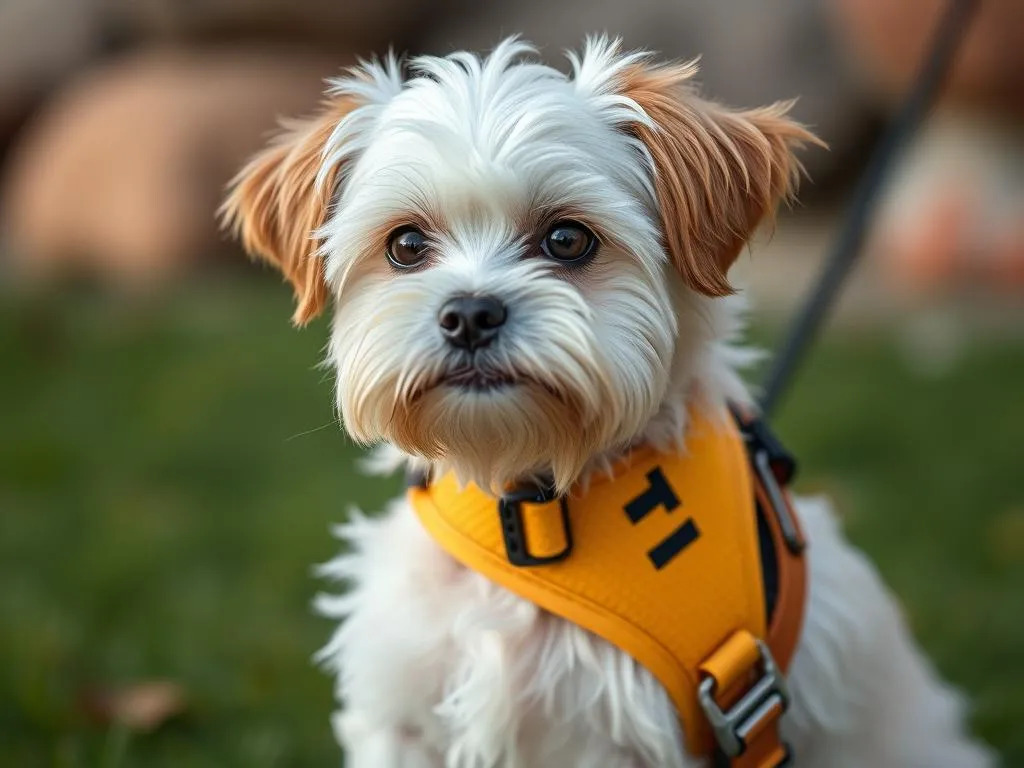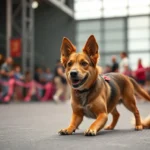
Using a harness for small dogs is essential for their comfort and safety. Unlike traditional collars that can put pressure on a dog’s neck and throat, harnesses distribute weight across the body, reducing the risk of injury. This is particularly important for small dogs, who can be prone to neck and spine injuries. In this article, we will explore the best harnesses for small dogs, focusing on various types, what features to look for, and how to ensure a proper fit.
Understanding the Different Types of Harnesses
When it comes to selecting a harness for your small dog, understanding the different types available can help you make the best choice. Each style has its unique benefits, and what works for one dog may not be ideal for another.
Back-Clip Harness
A back-clip harness is one of the most common types. It features a D-ring located on the back, where you attach the leash.
Pros:
– Easy to put on and take off.
– Great for calm dogs who don’t pull.
– Provides a sense of security for many small breeds.
Cons:
– Can encourage pulling, as dogs may feel less restricted.
– Not ideal for training dogs to walk nicely on a leash.
Ideal Uses:
Best for small dogs that are well-behaved and don’t have a tendency to pull during walks, such as Pugs and Shih Tzus.
Front-Clip Harness
The front-clip harness has a leash attachment on the front of the chest. This design allows for better control over your dog, especially if they tend to pull.
Pros:
– Redirects pulling behavior, making it easier to control.
– Helps to train dogs to walk beside you.
Cons:
– Can be a bit more complicated to put on.
– May rub against some dogs’ armpits if not fitted properly.
Ideal Uses:
Great for small dogs that are strong pullers or need training, such as Jack Russell Terriers.
Dual-Clip Harness
As the name suggests, the dual-clip harness features both front and back attachment points. This versatility allows for different walking styles.
Pros:
– Flexibility in usage depending on your dog’s behavior.
– Suitable for both training and regular walks.
Cons:
– Can be more expensive.
– May be bulkier than other types.
Ideal Uses:
Perfect for dogs that alternate between calm and energetic behaviors, such as Beagles or Cocker Spaniels.
Step-In Harness
A step-in harness is designed for ease of use. Your dog simply steps into the harness, and you pull it up and buckle it.
Pros:
– Extremely easy to put on, making it great for fidgety dogs.
– Reduces stress during harnessing.
Cons:
– Some dogs may find it confusing.
– Not all step-in designs offer the same level of support.
Ideal Uses:
Excellent for small breeds like Dachshunds or Maltese that may struggle with traditional harnesses.
Key Features to Look For
When selecting a harness, there are several key features you should consider to ensure the best fit and functionality for your small dog.
Comfort and Fit
Comfort is paramount for any harness. A well-fitted harness should not chafe or restrict movement. Look for harnesses with padding and breathable fabrics to keep your dog comfortable during walks.
Adjustability
Since small dogs can vary greatly in size, adjustability is crucial. A harness with multiple adjustment points can accommodate your dog’s unique shape and ensure a secure fit.
Durability and Safety
Choose a harness made from strong materials to withstand wear and tear. Look for safety features such as reflective strips for visibility during nighttime walks and sturdy clips that won’t break under pressure.
Ease of Use
Consider how simple the harness is to put on and take off. Quick-release buckles and step-in designs can save you time and help reduce anxiety for both you and your dog.
Top Picks for Best Harnesses for Small Dogs
Here are some of the best harnesses for small dogs currently available, based on comfort, safety, and user reviews.
Harness #1: PetSafe Easy Walk Harness
This front-clip harness helps to reduce pulling and is designed specifically for training.
- Key Features: Adjustable straps, padded chest plate, and a durable design.
- Pros: Effective for training, easy to adjust.
- Cons: Can rub under the front legs if not fitted properly.
- Customer Reviews: Highly rated for its effectiveness in reducing pulling behavior.
Harness #2: Ruffwear Front Range Harness
This harness is known for its durability and comfort. It has both front and back attachment points.
- Key Features: padded chest and belly panels, reflective trim, and multiple adjustment points.
- Pros: Versatile and comfortable for long walks.
- Cons: A bit on the expensive side.
- Customer Reviews: Users praise its comfort and ease of use for various dog activities.
Harness #3: Blue-9 Pet Products Balance Harness
This dual-clip harness is designed to align with your dog’s natural movement.
- Key Features: Lightweight, adjustable, and made from soft materials.
- Pros: Great for active dogs; does not restrict movement.
- Cons: Some users report difficulty in fitting.
- Customer Reviews: Highly recommended for its comfort and flexibility.
Harness #4: Chai’s Choice Adventure Dog Harness
This is a versatile harness suitable for both everyday walks and outdoor adventures.
- Key Features: Reflective strips, padded chest, and a handle for extra control.
- Pros: Excellent for outdoor activities; highly visible.
- Cons: May take time for your dog to get used to it.
- Customer Reviews: Users love its durability and comfort for long outings.
Harness #5: PetSafe EasySport Dog Harness
This harness is a back-clip style that is adjustable and easy to use.
- Key Features: Lightweight fabric, adjustable fit, and quick-snap buckles.
- Pros: Easy to put on and take off; great for everyday use.
- Cons: Less effective for dogs that pull.
- Customer Reviews: Praised for its simplicity and comfort.
How to Properly Fit a Harness on Your Small Dog
Fitting a harness correctly is crucial for your dog’s safety and comfort. Here’s a step-by-step guide.
Measuring Your Dog
Start by measuring your dog’s chest and neck. Use a soft measuring tape and ensure it’s snug but not tight. Accurate measurements will help you choose the right size.
Fitting the Harness
Once you have the right harness, place it on your dog. Adjust the straps so that it fits snugly but allows for some movement. You should be able to fit two fingers between the harness and your dog’s body.
Testing the Fit
After fitting the harness, observe how your dog moves. Look for signs of discomfort, such as excessive scratching or trying to escape. If the harness is too loose, it may slip off; if it’s too tight, it can cause chafing.
Common Mistakes to Avoid
Selecting the right harness involves avoiding common pitfalls that can affect your dog’s comfort and safety.
Choosing the Wrong Size
A common mistake is selecting the wrong size. Always refer to the manufacturer’s sizing chart and measure your dog before making a purchase.
Ignoring Material Quality
Opt for high-quality materials to ensure durability and comfort. Low-quality harnesses can wear out quickly and may not provide adequate support.
Failing to Consider Your Dog’s Behavior
Consider your dog’s activity level and temperament when selecting a harness. A more active dog may require a sturdier, more adjustable harness, while a calmer dog might be fine with a simpler design.
Conclusion
Selecting the right harness for your small dog is crucial for their comfort and safety. By understanding the different types of harnesses, key features to look for, and how to fit one correctly, you can make an informed decision. Remember to consider the specific needs of your dog to enjoy the numerous benefits that harnesses provide.
FAQs
What is the best type of harness for a small dog?
The best type often depends on your dog’s behavior. Front-clip harnesses are great for training, while back-clip models are suitable for calm dogs.
How do I know if a harness is too tight?
You should be able to fit two fingers comfortably under the harness. If you can’t, it may be too tight.
Can I use a harness for my puppy?
Yes, but ensure it is adjustable so you can accommodate their growth.
How often should I replace my dog’s harness?
Check for wear and tear regularly. Replace it if you notice any damage or if it no longer fits properly.
Are there harnesses designed for specific breeds?
Yes, some harnesses are tailored to the unique body shapes and sizes of specific breeds. It’s best to choose one that suits your dog’s needs.









